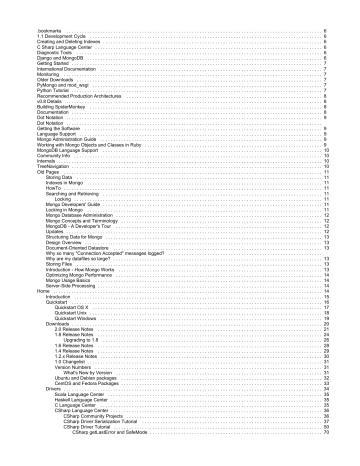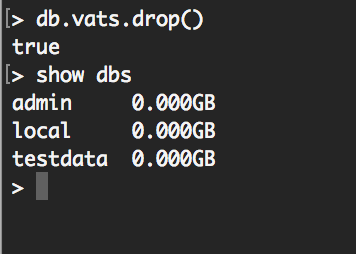
- #BREW INSTALL MONGODB 1.4 HOW TO#
- #BREW INSTALL MONGODB 1.4 INSTALL#
- #BREW INSTALL MONGODB 1.4 GENERATOR#
- #BREW INSTALL MONGODB 1.4 ARCHIVE#
$ mongodb -dbpath dataĪnd you'll want to open a new window because that window has MongoDB running in it. Anyway, now we need to get MongoDB running.
#BREW INSTALL MONGODB 1.4 INSTALL#
You could of course download it from the MongoDB web site and install it like that, but Brew on OS X makes things really quick and simple. Ok, we cheated a little here by using Brew to install MongoDB. Or, if you don't want/need launchctl, you can just run: Ln -sfv /usr/local/opt/mongodb/*.plist ~/Library/LaunchAgents The current tool set needs a running database to work with. There was a time when you could use the MongoDB tools on those files directly, but not since MongoDB 3.0.
#BREW INSTALL MONGODB 1.4 ARCHIVE#
Then, we want to download the archive from the site and extract it using tar in our new directory: $ tar xvZf enron_2Īnd now we have some bson files which will need reconstituting. Our task is to fix that and the first stop is to load it into a local database. The problem is this is all encoded as a backup and not as a JSON formatted file. The MongoDB edition of the data is most interesting as the email headers have been broken out making it good for searches and analysis. This file, available on the web contains over 500,000 email items from Enron and has been converted into a number of formats, but please bear in mind the history of the data when using it. The story starts with a MongoDB dump of what's called the Enron Email corpus. For this example, we're going to recreate a task we had to perform to get some test data for a range of databases. Transporter can also be used to transform existing data into more useful formats too.
#BREW INSTALL MONGODB 1.4 HOW TO#
We've previously shown some examples of how to use the Compose Transporter for moving data around between databases, and how to upload files to other databases. The error says that it can’t find the /data/db folder.Transporter Driving 3: Restoring and Extracting transporter export json Free 30 Day Trial Shutdown: going to close listening sockets. Errors when installing MongoDb on UbuntuĪs before you can find the tar ball at the Mongodb downloads page but on installing and running mongo, I encountered this error.Įxception in initAndListen std::exception: dbpath (/data/db/) does not exist, terminating Now you have ActiveRecord as your primary ORM and you may generate models with mongoid when you need it. To ensure that active record remains your primary orm add the following config to your application.rb

#BREW INSTALL MONGODB 1.4 GENERATOR#
Running the generator now makes mongo your default datastore and using the generator would build models using mogoid and not ActiveRecord. A very well written blog post on how to setup users on mongodb and maintain it with mongoid is provided here and I strongly recommend reading it.

This should generate a mongoid.yml file similar to your database.yml file in the config folder.

However, since I needed to still retain my mysql configuration I only ran this step If you decide to use Mongoid with MongoDB as your primary datastore you would have to follow these steps completely. I decided to go with mongoid (was recommended because its maintained and is unlikely to vanish soon) which only require you to add the gems to the Gemfile. I have been looking into Mongo purely because I was told its highly performant but I still need my primary datastore to be mysql because I see the need for transactions in the future. Using MongoDB with Mysql while continuing to use Mysql as the primary datastore. It can be launched byĪnd you should see a irb like shell. You’ll now see that the console is available for access.

Skip over to the bin folder and launch it with You may either download it from here or use homebrew to install it. Setting up mongo is really straight forward in OS X. I’ve been playing with mongodb for a little while now and here some basic issues that I faced and some setup help.


 0 kommentar(er)
0 kommentar(er)
